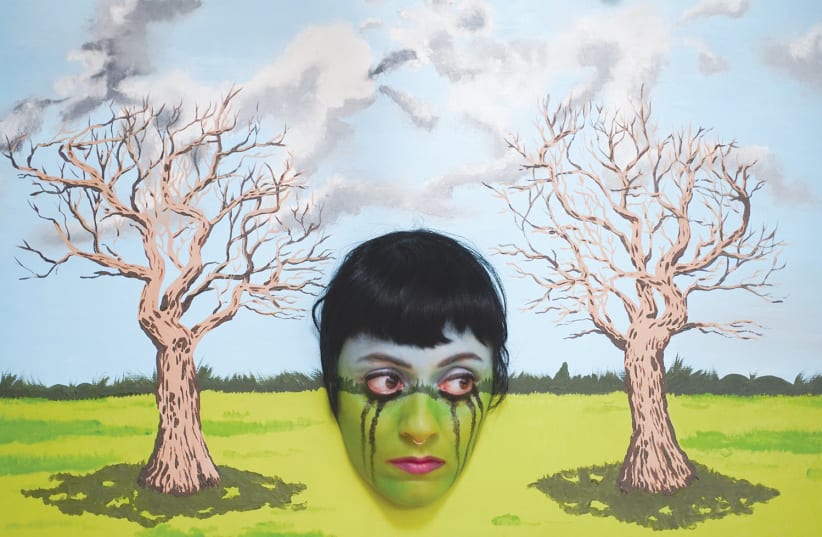Could there be a crazier idea than trying to teach Franz Kafka’s classic story, The Metamorphosis, to toddlers? Not really, but that’s what visual artist and filmmaker Roee Rosen at least pretends he has tried to do with his new movie, Kafka for Kids, which is running at the Tel Aviv Cinematheque throughout May and which will be shown at the Jerusalem Cinematheque on May 19 and May 23.
He has created a visually dazzling and wildly imaginative homage to Kafka’s work that makes all its absurdity vivid. Picture a combination of an episode of Sesame Street from the early 70s with lively but primitive graphics, surrealist paintings from any number of 20th century artists and a touch of pop art, and you’ve got an idea of what Roee Rosen’s movie, Kafka For Kids, looks like. It also features songs with a rhythm that sounds as if they are for children until you listen to the lyrics.
Gregor Samsa, the hero, or antihero, of The Metamorphosis, is rendered in animated sequences, and these clips are part of a live-action English-language children’s show, with opera singer Jeff Francis as host. Hani Furstenberg plays the child guest, who strains to get attention and be cute, but who becomes increasingly befuddled. This being Kafka for Kids, it’s not surprising that there is a character called The Bearer of Bad News, played by Eli Gorenstein. He brings up the fact that Kafka forbade all visual depictions of Gregor, which might seem to be a problem for the host, a.k.a. the Storyteller, but he finds a way to rationalize the animated story.
As bizarre and oddly beautiful as the animations are, the depictions of the studio, filled with actors portraying inanimate objects, such as the lamp, the table, and so on, that provide a kind of glum Greek chorus are equally striking, and several other shorter Kafka stories are dramatized or referenced, as well. Most of the film takes place in this set, as the story progresses. Eventually, Furstenberg appears as a grown-up legal expert, expounding on military law as it relates to children in the West Bank, weaving a distinctly Israeli political dimension into this fable that Kafka used to tell as a universal story about alienation, a critique of the circumscribed bourgeois world in which he was living and a fable about the specific dynamic of his family.
This strange but riveting full-length film is the latest work from Israeli artist Rosen, who has had shows of his works all over the world and has taught at the HaMidrasha Faculty of the Arts at Beit Berl and at the Bezalel Academy of Art and Design in Jerusalem. When I asked him what he was thinking when he created it, he had a great deal to say.
“Making Kafka accessible for toddlers was either funny or obscene,” he said. He began thinking about the project more than 15 years ago, as a nod to “discredited or marginalized genres, in this case a children’s program.” He had created identities of fake artists and written about them, he said, and that gave him ideas for how to do this project.
“I wanted to challenge my own veneration of this writer. I wanted to create gregarious and childlike motifs, to bring out the sense of humor in Kafka,” he said. He was especially interested in what he calls the animistic choir members in the film, because in Kafka’s work “there is always the lurking animistic sense.”
As he worked on the film, he had to cope with a cancer diagnosis and paralysis the disease caused, which has since abated. For a time his imagination was free to dream up images, but he could not create them. When he was free to move again, “I could invest myself in the visuals of the project. I worked on the sets and gouache drawings of the rooms.”
When the pandemic broke out, he worked with several animators, sending them scans of his sketches. In the end, he has produced a sprawling work that feels much more evocative of Kafka’s art and spirit than any literal live-action adaptation could be. Is this actually for kids? Well, not for any kid I know, but it would certainly illuminate Kafka’s work for literature students.
“My work is like the stepmother’s poisoned apple,” said Rosen. “It’s alluring and you are lured to this beautiful thing, simmering with uncomfortable aspects.”
